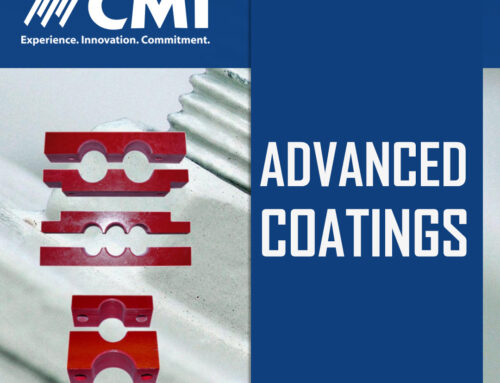Have you ever heard of a thermal gap pad and wondered what it is? If so, you’re in the right place. We’ll explain exactly what a thermal gap pad is and how it can benefit your life. Many people need to learn that thermal gap pads exist or why they are important, but this article will explain their purpose and benefits clearly.
The first thing to understand about thermal gap pads is that they act as insulation between two different surfaces, preventing heat transfer from one surface to another. This means that when placed between two hot components, such as an oven door and its frame, the thermal gap pad acts like a buffer zone, stopping unwanted energy from passing through. Thermal gap pads have become increasingly popular because of their ability to reduce energy costs by keeping spaces cooler for longer periods.
Additionally, there are several other advantages associated with using thermal gap pads. For example, these special insulating materials also help to protect against moisture buildup, which can cause damage over time if not addressed quickly enough. Furthermore, many modern-day structures require thermal gap pads due to new regulations requiring higher insulation levels than before.
In short, knowing what a thermal gap pad is and how it works can save money and hassle in the long run! So let’s dive into more detail on all things related to thermal gap pads – stay tuned!
What Is A Thermal Gap Pad?

Thermal gap pads are a thermal interface product that helps reduce heat transfer between two surfaces. Thermal resistance, or the ability of a material to resist the flow of heat energy, can be improved by using these thermal gap fillers. They come in various shapes and sizes, allowing maximum efficiency in applications such as air conditioners or computer processors.
The primary purpose of a thermal gap pad is to provide an effective barrier against the transmission of heat from one source to another. This barrier helps to maintain optimal performance levels while providing superior protection from overheating and reducing wear on components. Thermal gap pads also add cushioning and insulation, which helps reduce vibration and noise caused by shifting temperatures.
When considering what type of thermal gap pad best suits your needs, it’s important to consider factors like temperature range, application requirements, size constraints, and cost-effectiveness. With so many options available today – each designed with specific benefits in mind – you can find the right solution for your specialized project at the right price point. By understanding how different types of thermal gap pads work differently under certain conditions, you can make informed decisions about which option works best for your situation.
Types Of Thermal Gap Pads
Thermal gap pads are a vital component in electronics and many other industries. They play an important role in providing thermal conductivity between surfaces of varying sizes or shapes, so it’s essential to understand the types available. With that in mind, let’s consider what thermal gap pad materials make up these interface components.
Two main categories stand out when selecting a material for your thermal gap pad needs: silicone- and non-silicone based. Silicone-based gap fillers have improved conformability compared to their non-silicone counterparts, making them suitable for irregularly shaped surfaces. Meanwhile, non-silicone-based materials offer higher levels of thermal conductivity and better compression force capabilities when dealing with larger gaps between surfaces. In addition, some of these materials include metal particles such as copper, which further enhance their thermal performance.
No matter what type you decide on – whether silicone or not – there’s no denying the importance of thermal interface pads for ensuring efficient heat transfer from one surface to another. As we move forward, let’s explore the benefits offered by these versatile components.
Benefits Of Thermal Gap Pads

Thermal gap pads are a great way to improve the thermal transfer of heat from one surface to another. Using a thermal interface material and a unique thermal gap filler pad, you can ensure your device runs at maximum efficiency without wasting excessive energy. Thermal gap pads have many benefits, making them ideal for all applications.
The first benefit of these types of thermal pads is their ability to act as an effective yet efficient form of insulation between two components. This insulation layer prevents any loss or unnecessary heat gain between surfaces and assists in maintaining optimal temperature levels. They also protect against electrical shock when used with sensitive electrical components like microprocessors or circuit boards. Additionally, they can reduce vibration noise and even protect delicate parts from abrasion damage due to contact with other materials.
Another advantage associated with thermal gap pads is their low-cost design and production costs. This makes them much more ccost-effectivehan traditional methods, such as soldering or welding, which require expensive equipment and materials that quickly become costly. Furthermore, because these pads don’t require any specialized installation process (such as soldering), they’re easily installed into existing systems without disruption or needing special tools or skill sets – making them highly convenient for users who want quick solutions with minimal effort required on their part.
In short, thermal gap pads offer superior performance while eliminating the need for extensive setup procedures and additional expenses – making them perfect for anyone looking to maximize their device’s overall efficiency! The next section will examine how these incredibly useful products can be applied across various industries and scenarios.
Applications Of Thermal Gap Pads
Thermal gap pads are a material used to provide an interface between two components in electronic applications. Thermal gap pads reduce thermal resistance and increase heat transfer, making them ideal for high-performance electronics. They come in many shapes and sizes to accommodate different needs regarding thermal performance. Here are just three benefits of using thermal gap pads:
1) Enhances thermal performance – The unique makeup of these pads allows them to provide superior heat transfer due to their low thermal resistance; this helps dissipate heat more efficiently.
2) Cost effective – By improving thermal efficiency, users can save on costs due to reducing energy consumption.
3) Flexible design – Several options are available depending on the application requirements, such as shape, size, thickness, and other properties like compressibility, making them versatile across multiple industries.
These features make thermal gap pads a great choice for any situation where there is a need to improve the overall electrical insulation while providing reliable heat dissipation at the same time. Whether you’re looking for a cost-effective solution or require something with high levels of flexibility, these devices offer impressive capabilities that could benefit various electronic applications.
The next section will delve further into understanding how exactly these materials help boost your system’s overall thermal performance – so let’s dive right in!
Thermal Performance Of Thermal Gap Pads
Thermal gap pads are a great way to manage heat sources with their wide range of conductive solutions. With so many options in thermal performance, you’ll always find one that fits your needs! Thermal gap pads provide an effective and efficient solution for managing heat between two surfaces. They fill the space between components, acting as a barrier and providing insulation from heat transfer.
The best part about these thermal gap pads is that they come in various materials, allowing users to choose the right pad based on their specific application requirements. Heat sources can be managed easily by selecting a conductive gap filler pad with the appropriate thermal conductivity rating. These ratings are typically expressed in watts per meter Kelvin (W/mk). This number indicates how quickly heat energy will travel through the material when exposed to different temperatures.
One advantage of using these types of thermal gap pads is that there’s no need for custom-molded parts or expensive installation fees since most models come pre-cut and include adhesive backing for easy installation. No matter your setup type, you can find the perfect fit with these cost-effective solutions!
Whatever your project requires, there’s sure to be a suitable option due to the wide range of thermal conductivity options offered by leading brands. So don’t wait – get started today towards finding the right product for your application!
Wide Range Of Thermal Conductivity Options

Regarding thermal gap pads, there is a wide range of thermal conductivity options available. Whether you need something with high heat transfer properties or something that dissipates heat effectively over the surface area, there’s an option for your application needs.
Heat dissipation is key in any thermal pad, and having a good conductor of heat can reduce interfacial resistance significantly. With the right choice of material, you will be able to take advantage of its superior thermal performance that ensures efficient cooling capabilities. You can also use silicone reinforcements, adding additional protection against pressure and shock and increasing durability.
From liquid crystal polymer (LCP) to aluminum oxide – each type of thermal gap pad has its own unique features regarding its respective thermal conductivity capabilities. So depending on what you are looking for, you can find the perfect solution for your application requirements.
Finding the right thermal gap pad can be challenging, no matter what kind of heat-dissipating surface you require. Still, with a little research and effort, you will get one that perfectly suits all your needs – allowing efficient cooling without compromising performance!
Silicone Reinforcements For Thermal Gap Pads
A thermal gap pad is an essential component in many electronic devices. It’s a type of filler pad that can fill the space between two components, allowing them to maintain optimal heat transfer and prevent overheating or other damage. Fortunately, silicone reinforcements are now available for these thermal gap pads, providing greater protection and durability.
Silicone reinforcements help increase the conductivity of the thermal gap pad by providing extra insulation and preventing electrical leakage during operation. These reinforced pads also reduce stress on the surface area, ensuring a long product life cycle with fewer repairs needed over time. Their flexibility makes installing them much easier than traditional materials like copper or aluminum.
When choosing the right material for your application needs, you have plenty of options thanks to advances in conductive silicone technology. From ultra-thin sheets designed specifically for high-temperature applications to thicker styles perfect for low-profile designs – finding one that balances form and function has never been easier! With so many choices, you’ll be sure to find something just suitable for your device’s needs.
No matter what custom solution you’re looking for thermal gap pads, customers can rest assured knowing that advancements in conductive silicone technology mean lasting performance and reliable results every time. Moving forward into the next section about ‘custom solutions for customers’ becomes an easy transition as adaptive technologies progress towards improved efficiency and long-term effectiveness across all industries.
Custom Solutions For Customers
At Custom Materials, providing custom solutions for customers is our specialty. We have a wide range of elastomers designed for various applications and pressure-sensitive adhesives to simplify the application method. Our thermal gap pads are perfect for customers with unique needs, as we can customize them to fit any requirement.
We understand that not all projects require the same solution; often, they need something tailored specifically to their environment or requirements. That’s why we offer specialized services so you can get exactly what you need without having to compromise anywhere in your project. Plus, you don’t have to worry about installation – our team will handle it!
Our goal is simple: ensure that every customer gets high-quality products that meet their individual needs at an affordable price point. With years of experience and expertise in thermal gap pad customization, you can trust us to deliver results that exceed expectations each time.
So if you’re looking for a reliable partner who offers top-notch solutions tailored just for you, look no further than Custom Materials, Inc. Now let’s take a closer look at the conformability of thermal gap pads.
Conformability Of Thermal Gap Pads
One of the most important considerations regarding thermal gap pads is their conformability. This ensures that applications have access and can succeed on even the most uneven surfaces. At our company, we understand how crucial this product description is to the success of any project involving a thermal gap pad.
We specialize in creating custom solutions for customers who need reliable material with good conforming abilities. Each design and application requires its unique approach, so we take extra care when crafting our products. Our team has decades of experience designing these sophisticated solutions and is ready to help you find a solution that fits your needs.
Our years of expertise mean that not only do you get an unparalleled service but also gain access to best-in-class materials designed specifically for your application. With our thermal gap pads, you can trust in their dependable fit no matter what surface they’re being applied on!
Heat Transfer Through Thermal Gap Pads
Heat transfer is an integral part of any thermal management system. When it comes to transferring heat away from sensitive components, the use of a thermal gap pad can be invaluable. These pads are designed to provide an easy-to-use interface between two surfaces, allowing maximum cooling solutions efficiency. Let’s look at how these pads work and what makes them so effective.
Thermal gap pads come in various applications, making them suitable for almost any project that needs efficient heat transfer. Usually constructed from silicone or polyurethane material with high conformability, they provide excellent contact between two surfaces while creating air gaps with superior insulation qualities – perfect for dissipating large amounts of heat quickly and efficiently. Product descriptions will usually include details on size and thickness and the amount of thermal conductivity required.
When correctly installed, these gap pads create an ideal interface between heat sinks such as chipsets or processors and other areas like PCB boards or fans where temperatures could become too hot if not managed properly. This means that even during extreme usage scenarios, you can rest assured that your system won’t overheat due to poor heat dissipation via the thermal gap pad!
TIP: Check out product reviews before purchasing your thermal gap pad to know exactly what you’re getting and whether it suits your application. With some careful research beforehand, there’s no reason why you shouldn’t get great results from your chosen solution!
Heat Dissipating Surfaces For Thermal Gap Pads
Heat-dissipating surfaces for thermal gap pads are a critical component in ensuring the efficient transfer of heat. Thermal gap pads are often found between two components, such as an electronic device and its housing, providing insulation to prevent overheating and fire hazards. While these materials provide excellent benefits, they can only become effective if complemented with the right surface. That’s why selecting a heat-dissipating surface that will optimize efficiency while protecting your smart home devices is important.
Here are five factors you should consider when selecting heat-dissipating surfaces for thermal gap pads:
- Materials – Look for lightweight yet durable materials like aluminum or magnesium alloys
- Width – Tailor the width according to the size of your electronics
- Thickness – Use thicker material for larger gaps
- Cost-effectiveness – Investigate cost-effective solutions without sacrificing quality
- Heat dissipation rate– Determine how much heat needs to be transferred from one component to another
To ensure safety and performance, you must choose a high-quality surface designed specifically for thermal gap pad applications. By considering these five key elements before making your selection, you can rest assured knowing that your device will stay cool and protected against potential damage due to excessive temperatures. This will also help extend the life of your electronic devices as temperature control is vital in keeping them working optimally over time. Ensuring you have selected the best possible heat-dissipating surface for thermal gap pads will go a long way toward safeguarding yourself and your precious investments! With this knowledge, we can now explore how electronic devices utilize thermal gap pads.
Electronic Devices Utilizing Thermal Gap Pads
Electronic devices such as smartphones, tablets, and computers run on the energy their batteries generate. But when these gadgets are exposed to extreme temperatures or overworked, the battery can quickly become overheated. To protect the device from damage and extend its lifespan, engineers have come up with a creative solution: thermal gap pads!
Thermal gap pads act like heat-dissipating surfaces that transfer excess heat away from sensitive electronic components. They’re designed to fit around parts of the gadget’s circuitry where there’s a lot of activity—like USB ports or memory cards—to ensure they don’t get too hot. Think of it as putting an extra layer between your electronics and the environment, so they don’t burn up!
To maximize their effectiveness, some manufacturers also include pressure-sensitive materials in the design of thermal gap pads. These materials help ensure proper contact between the pad and whatever surface it’s attached to, which helps conduct more heat away from vulnerable areas. Pressure-sensitive technology is especially useful for portable devices because it helps keep them cool even when you’re out and about moving around a lot.
TIP: When shopping for protective gear for your electronics, look for products that feature thermal gap pads and pressure-sensitive technologies for maximum cooling effect. That way, you can rest assured that your precious gadgets will stay safe no matter how much use they get!

Pressure Sensitive Thermal Gap Pads
Pressure-sensitive thermal gap pads are an essential component in many electronic devices. These tiny sheets of material have a cushioning effect that helps protect the device from vibrations and shock and provides additional insulation for temperature control. They’re also incredibly useful for maintaining the right level of contact between dissimilar materials like metal or plastic components. Let’s examine how they work and why they’re so important.
When two different surfaces come into contact, they often resist due to their differing properties. This can be especially true if one surface is much harder than the other because then friction will occur resulting in increased heat at the interface which can cause damage over time. Pressure-sensitive thermal gap pads help reduce this interfacial resistance by creating a buffer zone between them. The pad absorbs any pressure put on it while still allowing some amount of contact between the surfaces, thus greatly reducing frictional heat buildup and helping prevent long-term wear and tear on parts due to vibration or shock exposure.
In addition to reducing interfacial resistance, pressure-sensitive thermal gap pads also provide excellent insulating capabilities against high temperatures or extreme colds – though they must be used carefully since too much padding can increase heat transfer instead of preventing it! Here are some key benefits: – Increased Efficiency & Reliability: Thermal gap pads help keep your electronic equipment operating more efficiently and reliably by minimizing heat build-up caused by friction at interfaces; plus, they offer protection against shocks and vibrations that could damage delicate components over time. – Improved Temperature Control: Pads act as an effective barrier against extreme hot or cold temperatures, ensuring devices don’t become too hot during use or freeze up in icy conditions. – Versatility: A single pad can be used for multiple applications, including ensuring proper contact between various types of metals or plastics without damaging either material’s surface layer.
These qualities make pressure-sensitive thermal gap pads invaluable for any electronics assembly line – no matter what device you’re building! With such wide-ranging benefits, these small but mighty pieces of engineering hold immense potential for improving performance in all kinds of applications. So now, let’s explore the interfacial resistance of thermal gap pads.
Interfacial Resistance Of Thermal Gap Pads
The interfacial resistance of thermal gap pads is critical in determining their overall performance. When used correctly, this type of pad can help to transfer heat from one surface to another with minimal loss and lesser potential for damage due to overheating. Here are some key points about the interfacial resistance of these pads:
- They provide an improved level of insulation between surfaces.
- The pad’s material helps reduce energy losses across the interface.
- It also reduces any chance of short-circuiting or sparking at the contact point.
- Furthermore, they ensure better temperature stability during operation by absorbing and dissipating excess heat generated by components.
These properties make pressure-sensitive thermal gap pads ideal for applications where high levels of accuracy and precision are required. Creating a reliable barrier between two materials enables efficient heat transfer while preventing overloading or other forms of failure resulting from incorrect usage. Plus, they allow users to adjust settings depending on their requirements without compromising reliability or safety. Considering all this makes them an incredibly valuable tool to achieve optimal results in delicate operations. As such, many industries now rely heavily on these thermal gap pads as part of their day-to-day operations. Moving forward, we’ll look at how these same principles apply to thermal interface material for uneven surfaces.
Thermal Interface Material For Uneven Surfaces
When choosing thermal interface materials for uneven surfaces, there are a few things to consider. Thermal gap pads can provide the necessary insulation and protection from heat transfer that many electronic components need to perform optimally; however, finding the right fit for your application is essential due to their irregularityl.
Let’s break down what you should watch when selecting thermal gap pads: * Adhesion: You’ll want a thermal pad that adheres well to flat and curved surfaces so that it won’t move around or create air gaps which will reduce its effectiveness. * Interfacial resistance: This is the amount of energy lost due to differences between two adjacent layers of material. Low interfacial resistance is important as it transfers more heat away from sensitive components.
The good news? Plenty of products on the market are specifically designed to provide superior performance in these areas while being easy to install and cost-effective! From flexible silicone rubber pads with high adhesive strength and excellent conformability to electrically conductive silver-filled epoxy gels with effective resistivity values – no matter what your needs may be, there’s likely something available that will work perfectly for you.
No more guesswork is required – now all you have to do is find the perfect match for your project! With this knowledge, you can feel confident knowing that you have access to reliable solutions when looking into thermal gap pads.
Frequently Asked Questions
What Is The Cost Of A Thermal Gap Pad?
Thermal gap pads are an essential component of any electronic cooling system. They provide effective thermal insulation and bridge the gaps between two surfaces to improve heat transfer. But what is their cost?
When it comes to purchasing a thermal gap pad, there are a few things you should consider:
- Price range: Thermal gap pads come in various shapes and sizes, so their prices can vary greatly.
- Compatibility: You need to ensure that your device is compatible with the type of pad you’re purchasing before making your purchase.
- Requirements: Make sure you know the exact specifications for your device to find the right size and thickness of the gap pad.
For those looking for affordability without sacrificing quality, generic thermal gap pads may be worth considering. These often come at lower costs while still providing excellent performance regarding temperature management and insulation needs. Plus, they’re easy to install – no tools or special skills are required! So if you’re after budget-friendliness, these are the things for you.
No matter which option you decide, ensuring proper installation and maintenance will go a long way towards prolonging its lifespan and maximizing its efficiency – both key factors in finding value for money from your thermal gap pad investment.
Are Thermal Gap Pads Easy To Install?
Are thermal gap pads easy to install? This is a question many people have asked when looking for an effective and efficient way of dissipating heat from their electronics. Installing a thermal gap pad isn’t always simple, but it doesn’t have to be difficult either – the key lies in understanding its purpose and benefits.
Thermal gap pads are designed to bridge the gaps between two surfaces, providing insulation from vibration and heat transfer. They come pre-cut with adhesive backing, easily installed on any surface without taking apart your device or components. This makes them incredibly convenient and cost-effective, as there’s no need for screws or other hardware to get them up and to run.
With that being said, it’s important to remember that correctly installing a thermal gap pad requires some knowledge about how the product works. If you need clarification on what you’re doing then it’s best not to attempt the installation yourself; instead, seek out professional help if necessary. That way, you’ll ensure everything is properly fitted and working as intended – giving you peace of mind knowing that your electronics are protected against extreme temperatures.
So don’t let worries over installation scare you away from using these great devices! With just a little know-how, thermal gap pads make an excellent addition for anyone wanting added protection for their electrical equipment.
What Is The Lifespan Of Thermal Gap Pads?
Thermal gap pads have many beneficial properties, from improved electronic performance to increased reliability. But one thing that can be confusing for people is their lifespan – how long will a thermal gap pad last?
The answer depends on several factors; usage, exposure to environmental elements, and even the material composition of the pad itself. In general, most thermal gap pads are designed to last between five and ten years. Here’s why:
- Usage – Depending on how often your equipment runs, how much it’s exposed to heat or other wear & tear, and if maintenance practices are followed correctly, you may experience extended life from your thermal gap pad.
- Environmental Elements – Temperature variations, humidity levels, and airflow all affect the longevity of a thermal gap pad. If these conditions remain within normal ranges, then you can expect greater durability over time.
- Material Composition – Thermal gap pads come in different materials, such as rubberized foam or silicone-based elastomers, with varying lifespans depending on quality and design integrity. Generally speaking, higher-grade materials equate to longer-lasting products and cost more upfront.
So when considering whether or not a thermal gap pad is right for your application, consider its anticipated lifespan as part of your decision process. Proper installation techniques and regular maintenance checks can ensure maximum efficiency while keeping costs down over time.
Are Thermal Gap Pads Safe To Use?
Thermal gap pads are often ideal when selecting materials for your electronics and mechanical projects. But the question remains: Are they safe? Rest assured that these specialized products have been designed with safety in mind!
First, thermal gap pads are created using a high-quality silica-based flame retardant material and insulation rated up to 200°C. This means that even when exposed to extreme temperatures, fire or electrical shock are not risks. Furthermore, due to their low outgassing properties, you won’t need to worry about releasing toxic fumes into the atmosphere, making them a much safer option than other alternatives, such as foam tapes.
In addition, many manufacturers use non-toxic adhesives on their thermal gap pads so that you can be sure that your project will stay secure without any danger of exposure to harmful chemicals while also ensuring environmental friendliness. With durable construction and reliable performance compared to other types of padding material, these specialty items offer superior protection from vibration damage and heat transfer over long periods – allowing everything you build to run smoother and last longer.
So whether you’re looking for something easy-to-use yet still incredibly effective at providing consistent cushioning between two surfaces where temperature management is important – then look no further than thermal gap pads; they provide unbeatable protection while keeping your environment clean and safe!
Are Thermal Gap Pads Available In Different Sizes?
It’s undeniable that thermal gap pads are essential for keeping electronics safe and performing at their best. But beyond providing protection, did you know they come in different sizes? That’s right, and these handy materials can be customized to fit your device perfectly.
So if you’re wondering what size is right for you, the answer is simple: it depends on the item you need to protect! Thermal gap pads come in various sizes to accommodate everything from small cables and wires to large computer towers. That way, no matter how big or small your electronics, there will be an option that fits like a glove.
You no longer have to worry about whether or not your device will stay protected; with a custom-sized thermal gap pad, you’ll get maximum coverage without any extra material left over. And since finding the perfect fit has never been easier than it is now, why wait? Get started today by selecting the ideal size for all your devices – and rest easy knowing that each one is properly safeguarded.
Conclusion
In conclusion, Thermal Gap Pads have a lot of benefits and can be used in various applications. They are cost-effective, easy to install and safe for use. They come in different sizes so you can find the right one for your needs. All these features make Thermal Gap Pads an ideal choice for thermal insulation solutions.
Once you consider all the advantages of using Thermal Gap Pads, you won’t hesitate to try them. Their superior performance compared with other materials makes them stand out as an excellent option for providing effective thermal insulation. Plus, their long lifespan means that you don’t have to worry about replacing them any time soon.
Overall, Thermal Gap Pads are a great solution for anyone looking for thermal insulation without breaking the bank or sacrificing quality and safety standards. So go ahead and get yourself some Thermal Gap Pads – you won’t regret it!







